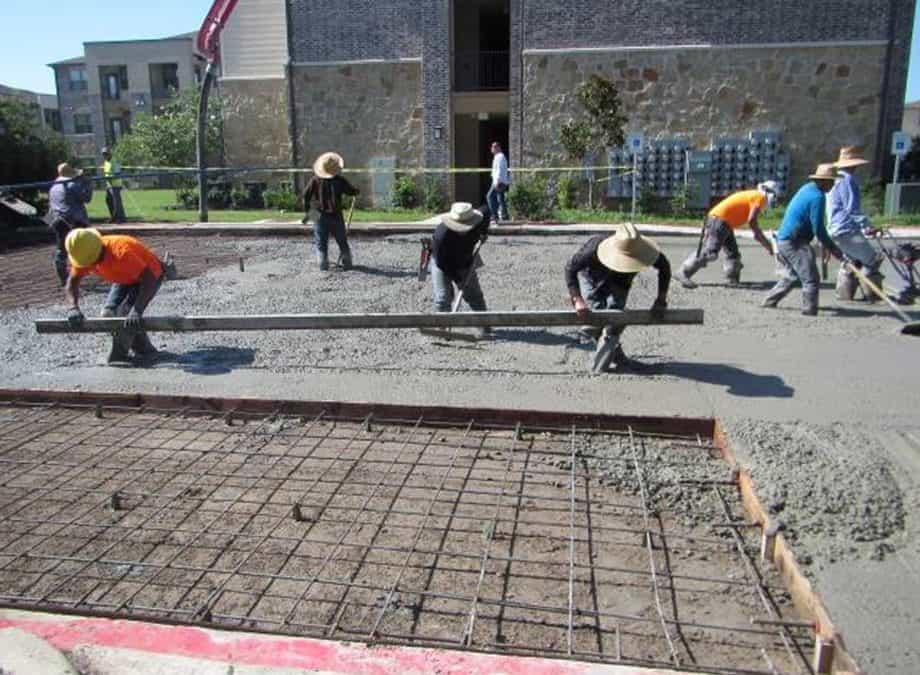Concrete remains the backbone of modern infrastructure, but it’s far from indestructible. Over time, even well-placed concrete can deteriorate due to environmental factors, poor material selection, or construction flaws. To accurately diagnose these issues, specialists rely on petrographic examination of concrete, a powerful technique that uncovers the internal structure and composition of concrete at a microscopic level.
By using petrographic concrete testing, engineers can pinpoint the underlying causes of failure, prevent future issues, and extend the life of concrete structures. In this post, we’ll take a deep dive into the top 5 concrete defects commonly identified through petrographic analysis and explain why this method is an indispensable part of structural evaluation.
What is Petrographic Examination of Concrete?
Petrographic examination of concrete is a laboratory-based analysis that involves slicing a concrete sample into thin sections for observation under a polarizing microscope. It provides detailed information about the mineralogical makeup, microstructure, and signs of deterioration within concrete. This method is often paired with scanning electron microscopy (SEM) for a more comprehensive view of the material’s condition.
Using petrographic analysis of concrete, experts can detect early-stage defects that are invisible to the naked eye. These findings help construction professionals take preventive or corrective actions with precision and confidence.
To learn more about our process, check out our dedicated page on petrographic analysis and scanning electron microscopy.
1. Alkali-Silica Reaction (ASR)
What is ASR?
Alkali-Silica Reaction (ASR) is a harmful chemical reaction between alkalis (sodium and potassium) in the cement paste and reactive forms of silica in certain aggregates. The reaction produces a gel that absorbs water and expands, leading to internal pressure and cracking.
How Petrographic Testing Identifies ASR
Through petrographic concrete testing, professionals can detect:
- Micro-cracks radiating from aggregate particles
- The presence of ASR gel under polarized light
- Reaction rims around susceptible aggregate types
- Deposits of white, gel-like material in voids and cracks
ASR is a time-dependent issue that worsens with moisture ingress. Petrographic examination allows early detection, enabling the application of lithium treatments or improved aggregate selection in future mixes to mitigate the issue.
2. Delayed Ettringite Formation (DEF)
What is DEF?
Delayed Ettringite Formation (DEF) occurs when concrete is exposed to high curing temperatures (typically above 70°C), which inhibit ettringite formation during early hydration. Once the concrete cools and moisture becomes available, ettringite begins to form and expand, causing cracking and swelling within the matrix.
Petrographic Indicators of DEF
DEF can be identified through petrographic analysis of concrete by spotting:
- Crystallized ettringite in cracks, voids, and around aggregates
- A “map cracking” pattern throughout the paste
- An absence of early-age ettringite in the matrix
- Disruption of paste-aggregate bonds
DEF is especially common in precast and mass concrete elements. Petrographic analysis helps confirm its presence, guiding remedial strategies such as moisture control, alternative cement blends, or reengineering curing protocols.
3. Freeze-Thaw Damage
Why Freeze-Thaw Damage Occurs
When water trapped inside concrete pores freezes, it expands by roughly 9%, creating internal stress. Repeated freeze-thaw cycles lead to micro-cracking, surface scaling, and eventual loss of structural integrity.
Detecting Freeze-Thaw Damage via Petrographic Testing
Petrographic examination of concrete reveals the following signs:
- Micro-cracks parallel to exposed surfaces
- Debonding between aggregate and paste
- Signs of paste disruption and void enlargement
- Lack of adequate air-entrainment spacing
By performing a petrographic analysis of concrete, professionals can assess whether the air-void system is sufficient to protect against freeze-thaw damage. When deficiencies are found, recommendations might include adjusting admixture dosages or specifying air-entrained concrete in future designs.
4. Carbonation
What is Carbonation in Concrete?
Carbonation is the result of carbon dioxide from the atmosphere penetrating concrete and reacting with calcium hydroxide to form calcium carbonate. While it reduces porosity, it also lowers the concrete’s pH, making steel reinforcement susceptible to corrosion.
Petrographic Analysis for Carbonation
Petrographic concrete testing can detect carbonation by:
- Identifying darkened zones under phenolphthalein staining
- Observing recrystallized calcium carbonate deposits
- Assessing depth and uniformity of carbonation fronts
- Linking observed damage to rebar corrosion
In aggressive environments, carbonation can severely undermine a structure’s durability. Petrographic testing helps assess the need for protective coatings, densifiers, or improved concrete cover over reinforcement.
5. Poor Aggregate Quality
Why Aggregate Quality Matters
Aggregates make up roughly 70% of concrete volume, meaning their quality significantly affects strength, durability, and resistance to environmental stressors. Poor-quality aggregates can lead to weak zones, excessive shrinkage, and chemical reactivity.
How Petrographic Examination Identifies Aggregate Issues
Petrographic examination of concrete identifies poor-quality aggregates by examining:
- Shape, texture, and angularity of aggregate particles
- Degree of weathering or chemical reactivity
- Presence of deleterious substances like clays, sulfides, or chert
- Compatibility of aggregate with cementitious matrix
This analysis ensures that only durable, non-reactive, and well-graded aggregates are used, preventing future complications such as ASR, DEF, or internal cracking.
Why Choose Petrographic Concrete Testing?
The benefits of petrographic concrete testing extend far beyond identifying defects. This method supports:
- Root cause analysis for premature failure
- Concrete quality assurance during and after construction
- Material compatibility evaluation
- Data-driven decisions for repair and rehabilitation
At C3S Inc., our experts combine traditional petrography with modern microscopy to deliver comprehensive petrographic analysis of concrete. Our services help clients—from engineers to facility managers—make informed choices that ensure safety, performance, and cost-effectiveness.
Conclusion
Understanding the hidden causes of concrete deterioration is essential for maintaining long-term durability and performance. Whether it’s alkali-silica reaction, carbonation, or poor aggregate quality, each defect carries potential risks that can be costly if left unchecked. Through petrographic examination of concrete, you gain invaluable insights that guide smarter construction and maintenance strategies.
For expert-level analysis and industry-leading service, trust C3S Inc. to deliver the concrete answers you need.


Recent Comments